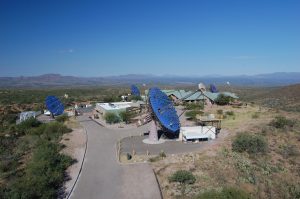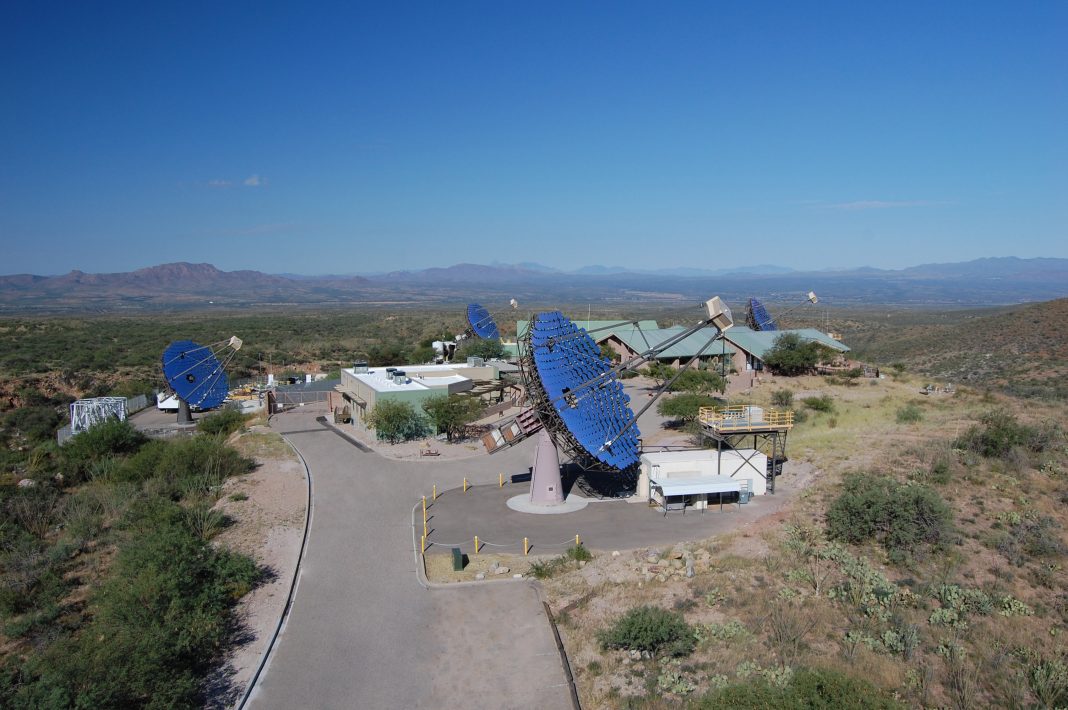Located near Amado, Arizona, the Fred Lawrence Whipple Observatory is an American astronomical observatory that houses the VERITAS (Very Energetic Radiation Imaging Telescope Array System) array of telescopes. These four telescopes are highly sensitive, specialized gamma-ray observation instruments. The complex is funded by notable groups, including the Department of Energy and the National Science Foundation, and examined by a large number of university research groups. This summer multiple DePauw students and professors joined in on the fun. Dr. Avery Archer, assistant professor of Physics and Astronomy, and Dr. Mary Kertzman, Professor of Physics and Astronomy and Chair of the Physics and Astronomy Department, took Ian Kuhl ’25, Alex Bittle ‘26, and Justin Zhou ‘23 to VERITAS.

In an interview with Kuhl, he explained what a regular day at VERITAS would look like. While the group would work long days, their operating hours were completely reversed.
“We would travel down a mountain, from our lodging to the telescopes around 6 or 7 p.m.,” he said. To achieve results with highly specialized telescopes like those at VERITAS, there had to be as little light pollution as possible. As the night turned into morning, the team would be hard at work until around 7 a.m. as the sun began to rise. Each day had a very specific checklist, Kuhl added, as Dr. Kertzman would lead the team through a Startup, Observation, and Shutdown procedure. With a telescope as large as this, the technology had to be properly operated and maintained each day. Kuhl was amazed at the size of the settlement as well as the technology at the observatory and noted the entire complex was full of physicists and astrophysicists—a physics student’s heaven.
Dr. Archer explained the scientific objectives and interpretation of results further. The Crab Nebula, one of the brightest gamma-ray sources in the Milky Way galaxy, was the focus of their measurements and observations. After a star’s supernova exploded, the Crab Nebula emerged as the remnant of its supernova explosion. This supernova remnant produces a uniquely high amount of gamma rays, which presents a unique opportunity to measure gamma rays themselves as well as the remnant. Gamma rays interact with the upper levels of our atmosphere, where they give off radiation and produce blue light, says Archer. Thus, the VERITAS telescopes measure the Cherenkov light (blue light) which is likely produced by the Crab Nebula. While the group does not know for certain that the blue light produced is from the Crab Nebula, Archer said that, “based on simulations we know what the pool of light could look like, and gives us confidence that the rays are gamma rays from the Crab Nebula.”
Unless you are a highly observant physics student, or Dr. Kertzman herself, many of us are wondering, what is the significance of this research? The goal of this research was to monitor the long-term variability of the Crab Nebula. In other words, physicists are interested in how the Crab Nebula’s emissions could be changing over time and what that could tell us about its behavior and other factors in space. Archer says that based on multiple years of data observing this remnant, it is highly unlikely that conditions surrounding the nebula are changing. However, this is a long-term project where the group was able to collect data regarding the brightness of the nebula over the past three seasons.
This extremely interesting research could not have been possible without the faculty development committee and the O.H. Smith Award. Ian Kuhl and Dr. Archer were appreciative of Dr. Kertzman’s assistance and knowledge regarding VERITAS and the research as a whole.



